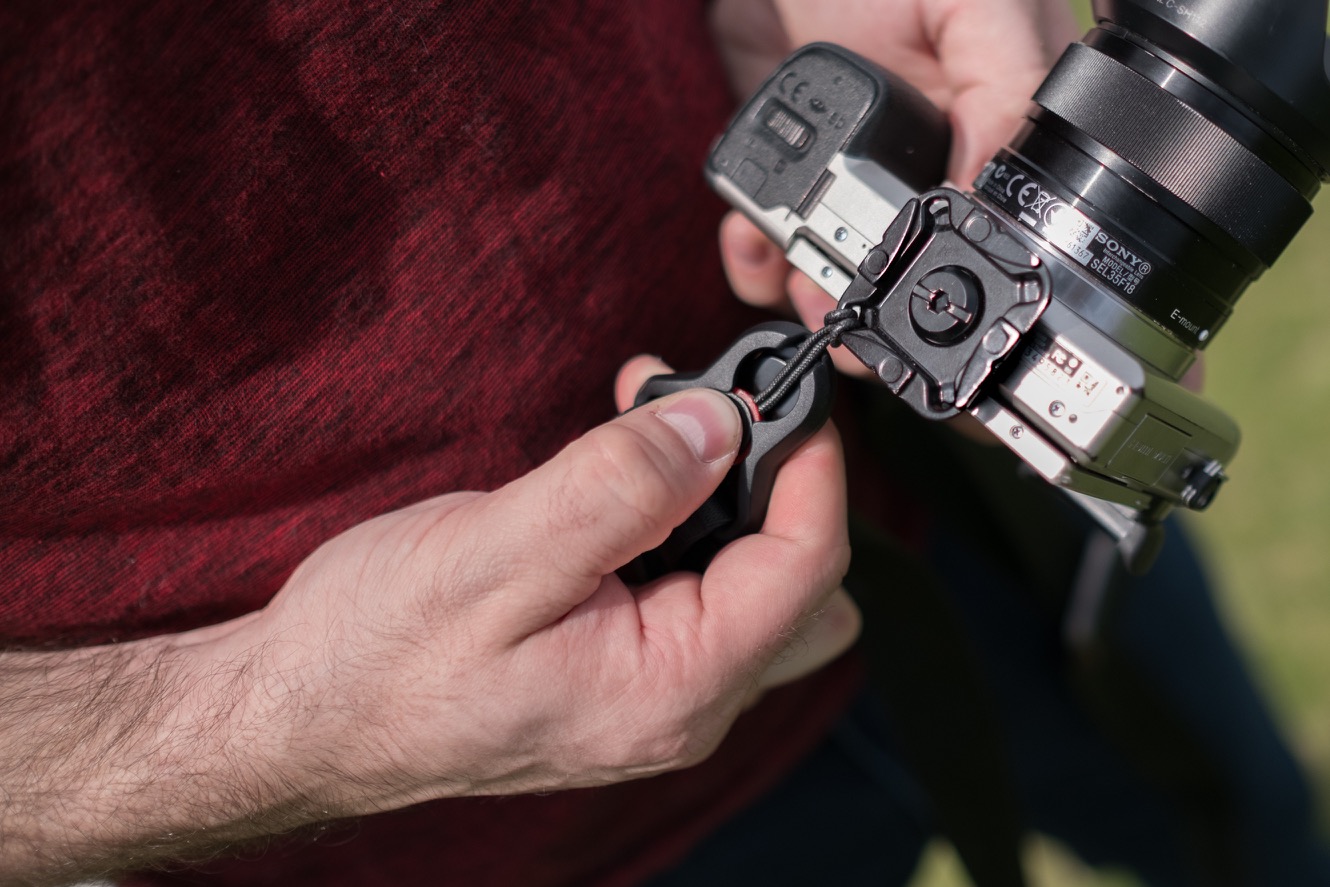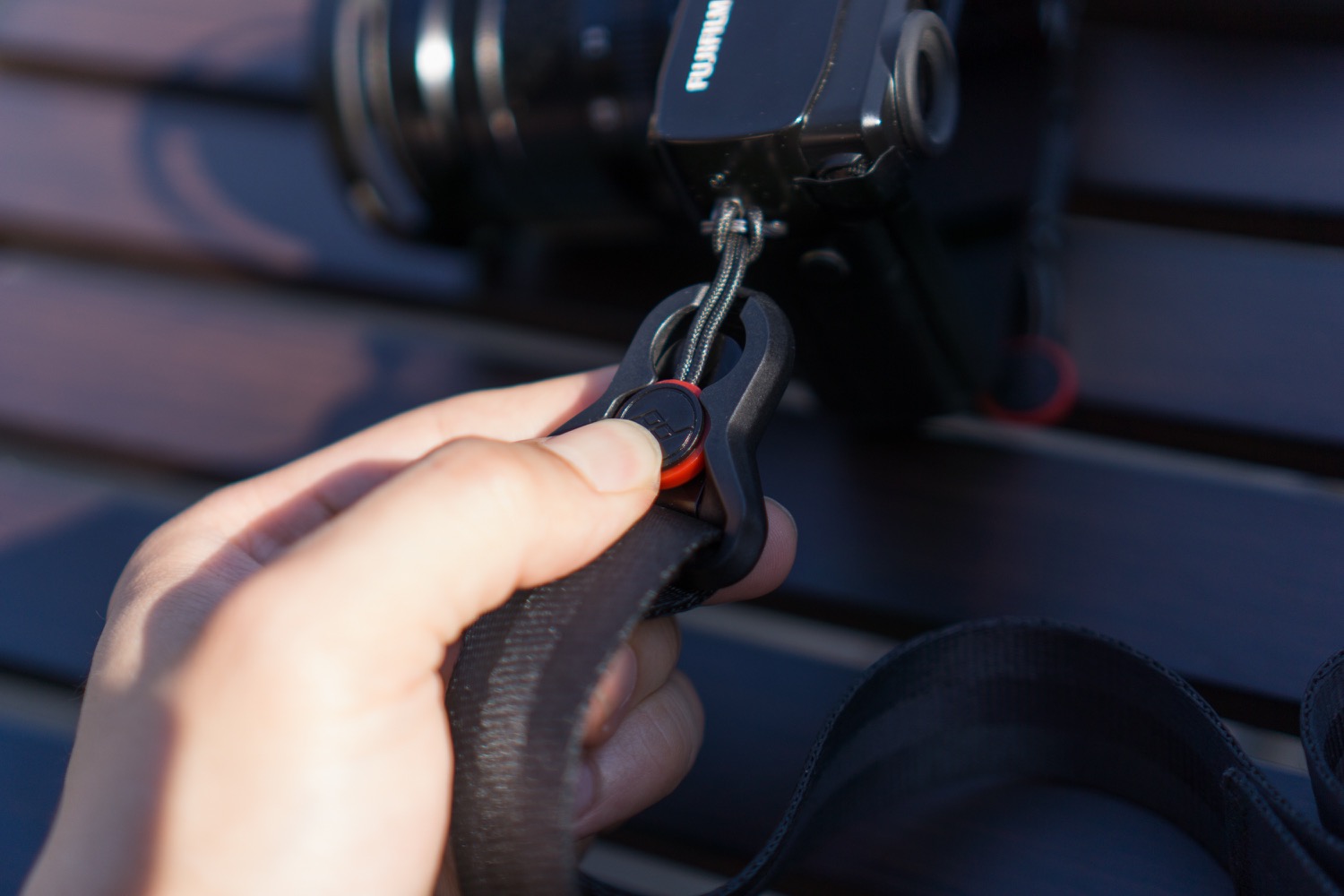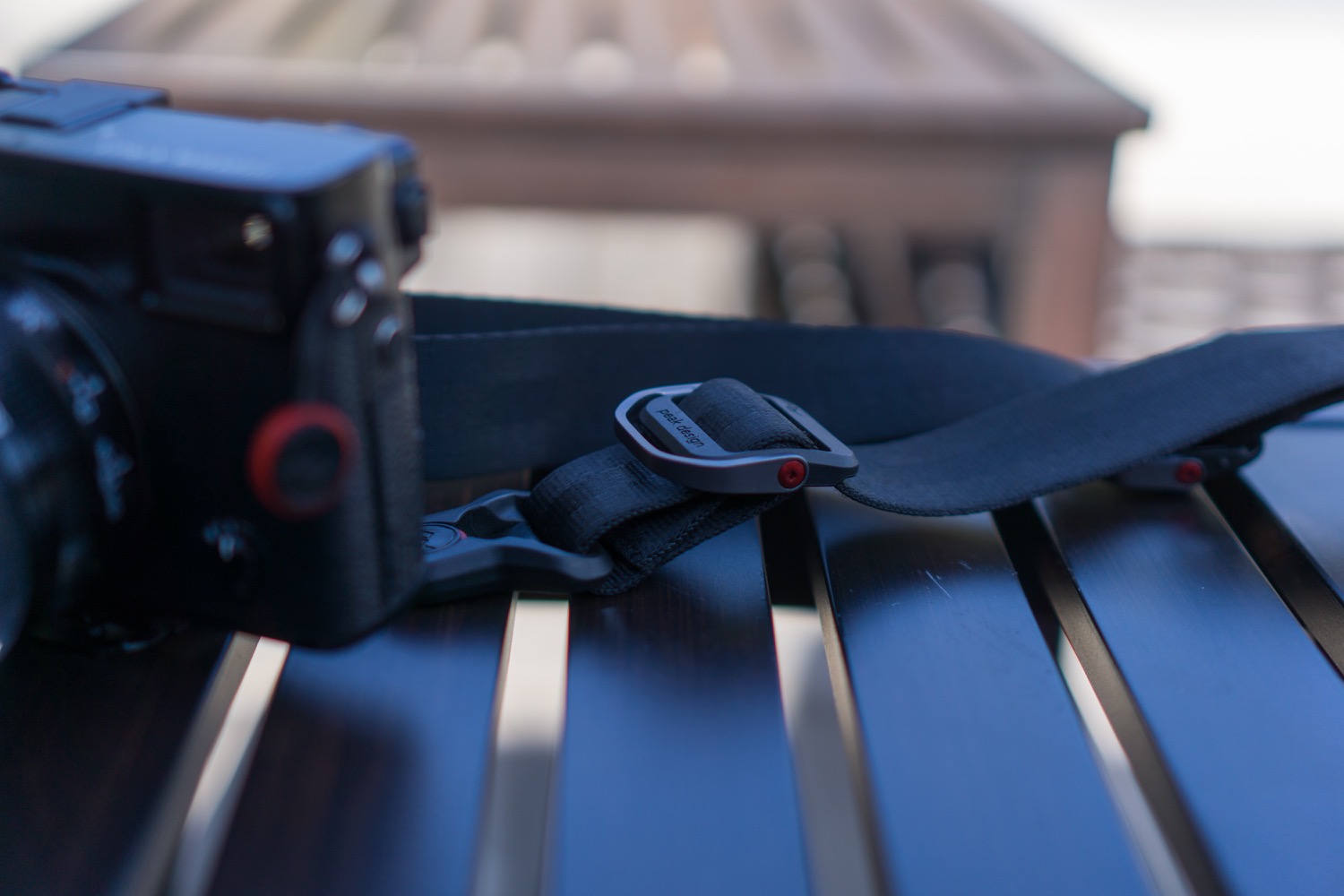There’s no such thing as the perfect camera strap, but the Slide LITE makes the right set of compromises for me. I’ve been using it for about five months on both the Sony A6000 and Fuji X-Pro 2 and have some thoughts to share.
The Slide LITE is a smaller, lighter version of the already established Peak Design Slide strap. In order to adapt it for mirrorless cameras, the strap width was reduced to 1.25 inches (down from 2 inches), and the embedded shoulder pad was removed (since mirrorless cameras are lighter than DSLRs).

You can sling the strap over one shoulder for a really casual carry.
However, the other major features of the Slide design are present: you can wear it as a neck or cross-body strap, aluminum quick-adjusters help to quickly change the length, and the whole kit can be detached from the camera when it isn’t needed.
You can go like this, or you can go like that
All you need to do for setup is take one of the included anchors and wrap it around an attachment point. These attachment points can be the eyelets on the sides of your camera, or on any corner of the included Arca plate (which screws into the bottom of your camera).

The included Arca plate has four mounts for anchor points, and screws in with a hex screw.
There aren’t any fancy knots needed to tie the anchors; a quick loop is all you need to secure them, and I’ve never had an issue with one coming loose. Once you have two anchors in place, you just click them right into the strap.

Once you feel and hear that click, your anchors are all set.
These anchors really are as awesome as the marketing would have you believe. They’re light so they don’t add any noticeable weight to the camera, nor do they make much noise if they bounce off the body. The anchors are also plastic, so you won’t have to worry about them scratching anything on the camera body or an attached lens.

No need to worry about abrasion with the anchors; they’re all plastic so they won’t scratch anything.
Securing the anchor to the Slide LITE strap is a quick and very satisfying process, akin to closing a well-designed buckle. The sharp click lets you know the anchor is set and won’t fall out. But a pinch in just the right spot will release the tension on the anchor, and allows you to detach the Slide LITE from a camera in seconds.

Press down and then and pull on the anchor to remove it from the strap.
I haven’t yet had an anchor wear down on me, but Peak Design’s manual states that the Dyneema cord is actually layered in three different colors. Seeing yellow lets you know that the anchor has worn down a little, and seeing red means the anchor will need replacing. Peak Design does boast a lifetime warranty on wear for all their products, but I (fortunately) haven’t had an occasion to test their support system yet.
Neck Strap
The Slide LITE is advertised as both a neck strap and a sling strap. I’ve never liked wearing cameras around my neck, so I’m already biased there; if your camera is more than a few ounces, this style of carry seems like an easy way to give yourself a neck ache after a day of walking. That’s not even accounting for the discomfort of having the camera bounce off your chest all day long.

The Slide Lite is both a neck strap and a sling strap, depending on where you place the anchors.
However, the X-Pro 2 and a small 35mm prime lens (which I don’t own…yet) would seem like a great match for this carry style. It looks and feels casual, and if you have the strap short enough (right at chest level), there isn’t too much of an opportunity for your camera to use your torso as a bouncy castle.

Slide LITE sits most comfortably at or below below chest level.
There are many other paracord or leather neck strap designs out there, and although most aren’t adjustable, they are very compact when you rest the camera on the table. The Slide LITE is a little awkward when you shorten it all the way and set it down. This is all because the slack that’s held in place by the quick-adjusters splays out. The strap isn’t huge, but it is more voluminous than dedicated neck straps.

The Slide LITE isn’t exactly a compact neck strap when placed on a table.
But the main reason I don’t use the Slide LITE as a neck strap is because of the width. While 1.25″ is a good width for distributing weight as a cross-body strap, I find it a little intrusive when it’s around both sides of my neck. I’d actually rather have a thinner strap width — like the one on Peak Design’s Leash — for a neck strap so that the experience is a little less constricting.
Sling Strap
Using the Slide LITE as a sling is really where the action is at. When worn at the right angle, the camera simply stays still against your body as you walk. But it’s always easy to pull the camera around and bring it up to shoot. When you’re done, just tuck it in the small of your back, and go on with your day. The aluminum sliders make it very easy to adjust the length of the strap — from either side — so you can wear your camera as tight or as loose as you like.

If you want to tweak the length, just flip one of the aluminum adjusters up and pull.
There aren’t any tricks to learn about how to swing or adjust the strap — but you will need to try a few different anchor setups to see what is right for your camera.

The aluminum quick adjusters have a really slick design.
On the A6000, I’ve found it most comfortable with one anchor strap on the side of my camera, and another anchor along the Arca plate. However, the X-Pro 2 is a bigger camera overall, so I attach both anchors to the Arca plate and let the camera hang lens-side-down.

A POV shot of adjusting the Slide Lite while wearing it as a sling.
It’s this flexibility in the attachment points that really makes this strap setup unique, and I really like having the lens face down as I walk. It’s less prone to hitting anything, and it also means that less dust and dirt makes it onto the front element.
The Mirrorless Strap
Before I purchased it, I was a little doubtful of how well the Slide LITE would deliver on its promise of flexibility. Now, I think this is one of Peak Design’s best products. The anchors are very secure in use, while also feeling effortless to attach and detach as needed.

This strap pairs beautifully with mirrorless cameras of all sizes.
The strap width works decently as a neck strap, but is perfectly suited for use as a cross-body sling that is adjustable in a pinch. The four included anchors also make it very easy for you to switch the strap for use on multiple camera bodies. At just $50, I think the Slide LITE is the strap for mirrorless users.